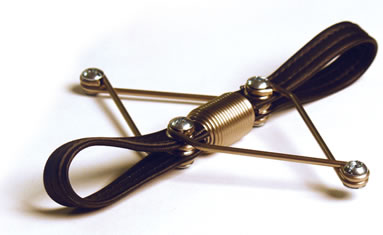What if I told you that if you did 10 minutes of body movement every other day for the rest of your life, you could increase performance, mobility, balance, strength and ease discomfort…. would you do it?
Enter in Pilates.

Wait, Jen, what is Pilates? It’s a series of movements focus on whole body movements, breathing, concentration, control, and precision. Pilates is full body integration. And the benefit varies from person to person. “Some people experience gains in mobility, balance, strength and connection. Others may seem more in control in their body and less prone to injury. Still others might resolve years of pain and discomfort, and another group might increase their speed and/or endurance at their sport of choice.” (From Pure Body Teacher Training)
As a lifelong athlete, I’ve experienced a series of setbacks: achilles overuse, ACL and MCL tears, hamstring ruptures, SI Joint instability and the catch-all lower back pain. Endurance sports are wrought with overuse injuries. And let’s be honest: life can be one long endurance event.
We all, as humans, encounter some sort of injury/pathology at some point in our life.
A physical therapist during one of my many visits to health care professionals suggested I start Pilates. I had no idea what that meant or whether it would work but I was willing to give it a try. That was nearly five years ago. During that time, I would increase my visits when my lower back pain flared up and once I felt better, I would resume my previous patterned cycling, ditching those core movements. Once that strength wore off – boom! My lower back pain would flare up.
In hindsight, I saw a pattern. Do Pilates, feel better and think I was “cured.” Back off Pilates, back pain crept back in.
When my local teacher, Whitney Shea, mentioned she was leading a teacher training in Boulder, Colorado, I signed up immediately. Not only for my own practice but for the possibility to help others feel good in their bodies. Part of the program is learning over 500+ exercises on the mat, reformer, Cadillac, chair, spine corrector, and ladder barrel, and then we have to practice and teach it.
My personal practice of 10 minutes a day to keep the lower back pain monster at bay developed into 3-4x hour long sessions each week. It’s been over 2 years and I feel stronger, more mobile, balanced, and am seeing higher power numbers on the bike than the past two decades of racing.
Head into a gym or seek out a coach and layer on your potential limitations – and you begin to wonder, should I push more? Is it safe to do certain movements? What will help/hurt in the long term? If exercise is helpful, what happens if I just cycle/run/swim for the rest of my life?
The answer can show up in the form of imbalances. As an athlete, having a movement teacher should be one of your performance team members. Someone who can watch you do a movement, coach you to harness more strength/mobility/balance and increase or decrease the challenge, depending on what your body needs. They’re there to help you balance your strength.
It takes a trained eye. Movement teachers have a deep responsibility to know about different pathologies and how to address them. The more a teacher knows, the more they can help the body that walks in front of them and tap into their strength in a way that’s safe, effective and helpful.
Pilates Teacher Training with Pure Body has been consuming my extra time for over the past year. What started as a way to decrease visits to the chiropractor and chasing the cause of lower back pain, developed into a long term deep study and is transforming my life. I am deeply curious about this subject with the goal of passing on this knowledge and wisdom to those I work with.
The beauty of the program I’m studying also exposes students to additional pathologies: osteopenia, osteoarthritis, lumbar degeneration, fusions, post-ops, stenosis, spondylolisthesis, cervical pathologies, sciatica, hip/knee/shoulder replacement, Morton’s neuroma, glaucoma, vertigo, prolapse, torn rotator cuff, bursitis, DRA, high blood pressure, adipose tissue, pregnancy, just to name a few.
As I continue my path an apprentice teacher, I am looking for athletes who are interested in learning more about how their bodies work and are willing to do the full-body integration movements. If we’re not in the same proximity, we can certainly set something up remotely. If this is something that interests you – please let me know and we can work out the details.
Keep crushing those dreams and goals and here’s to better health through movement!






